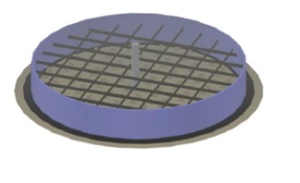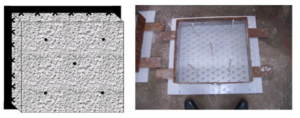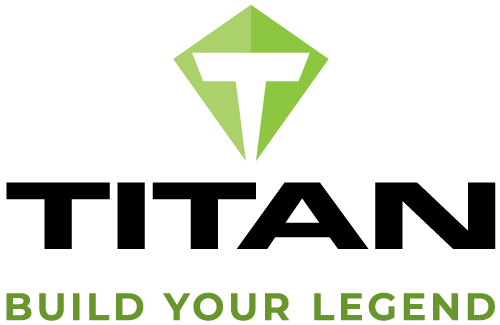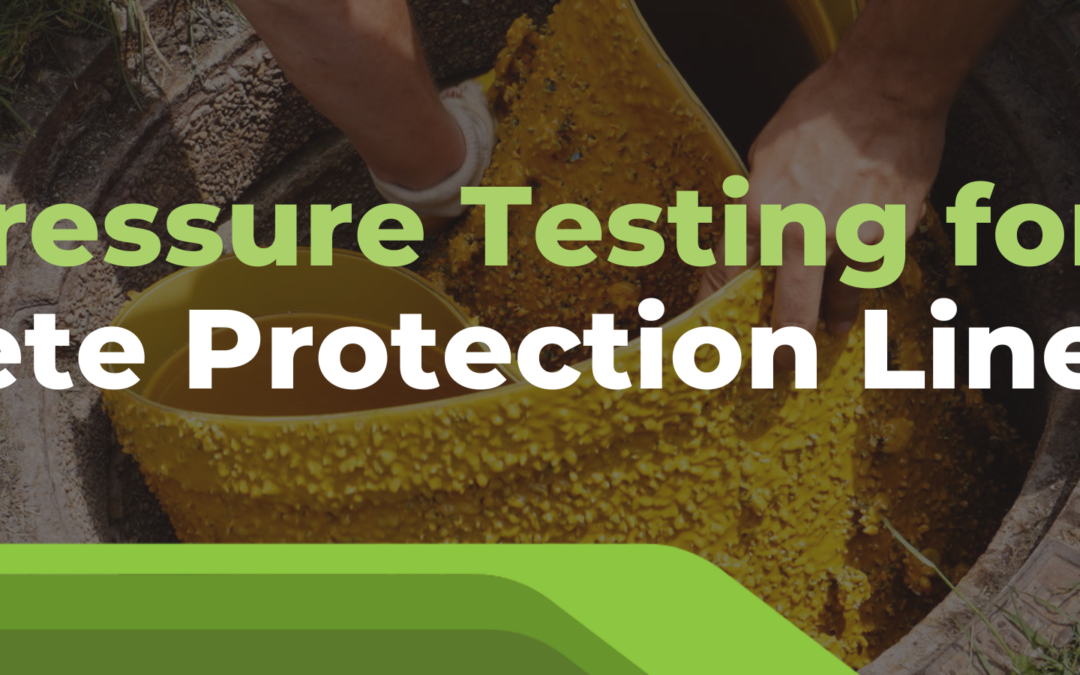What is Concrete Protection Liner?
Concrete Protection Liner (CPL) is a high-density polyethylene (HDPE) geomembrane sheet with anchors on one side that embed into the concrete. The design life of CPL is the design life of the structure.
This design life is possible thanks to CPL’s high resistance to corrosion and backpressure. The anchors on the back of CPL are positioned to form a grid pattern, allowing water to divert around the anchors without pushing the liner out of the concrete.
What Causes Backpressure?
Backpressure is the amount of hydraulic load being put on the liner from a leak in the system. Simply put, the deeper the pipe is in the groundwater, the higher the potential backpressure is. Excessive backpressure can cause the liner to break or come out of the concrete.
Backpressure Testing
Most failures in concrete protection occur due to backpressure from groundwater, no matter the type of liner system (HDPE liner, coating, etc.). This is why an anchored product is advantageous, because it’s structurally bound into the concrete.
Not all backpressure tests are created equal. Different tests will produce different results. It is imperative that you ensure you are comparing test results of the same kind when evaluating liner performance. We also recommend evaluating liner with tests that require holding back pressure for a minimum of 1,000 hours. These tests more accurately represent field conditions.
Pull-Out Strength and Backpressure
There is no accurate mathematical correlation between pull out strength and backpressure. Pull out testing is instantaneous and does not take into account the long-term effects back pressure has on a liner. Creep is a term used to describe how plastic deforms under load over a long duration. All plastics have some amount of creep under load. Mathematical calculations that try to correlate pull out strength to backpressure resistance do not figure creep into their equation. Creep cannot be calculated and can only be evaluated in long term backpressure testing.
Anchored products can fail from backpressure if not properly evaluated and designed for the site-specific application. Learning how to test and design for back pressure correctly will help ensure your anchored liner doesn’t fail.
Industry Tests: ASTM vs SKZ
There are two industry methods for testing backpressure.
ASTM Backpressure Test
- One 0.25-inch (6.35mm) cylinder inserted in the middle of the test sample.
- Liner is clamped evenly around the circumference of the test sample.

Test Conditions
|
Standard Laboratory Atmosphere |
73.4 (±) 3.6F (23±2’ °C) acc. ASTM D 618-05 |
|
Hydraulic pullout resistance is expressed in |
lbs (kPa) |
|
Test requirements |
Increasing pressure in 5 psi (0,34 bar) Increments every 1 h |
|
Failure determination remark |
Visual observation |
|
Failure modes |
LP – Locking extensions pullout from embedment LB – Locking extensions break from liner surface CF – Concrete fails before locking extension failure NP – No pullout or product failure during test period |
There are two main issues with this test:
- There is only a single point of pressure applied.
- The liner is clamped.
Due to these factors, the pressure is dissipated around the circle evenly and it doesn’t represent field conditions. In the field, there will be constant tension on the liner that this test doesn’t account for.
Further, the test requires a minimum of 5,000 PSI concrete. This means that technically, the test can be cheated by increasing the amount of concrete used and creating better performance values – once again not truly representing field conditions.
While the ASTM test is widely used in North America, this test provides short-term data which is only useful for product comparison and doesn’t provide long-term maximum backpressure resistance data.
Titan’s concrete protection team recommends another backpressure test developed in Germany.
SKZ Backpressure Test
- 5 points of pressure
- Puts liner under stress for 1,000 hours
- 3,600 PSI required

Test Conditions
|
Standard Laboratory Atmosphere |
23±2’ °C (73.4±3.6F) acc. ISO 291 |
|
Hydraulic pullout resistance is expressed in |
bar or psi |
|
Test requirements for long-term backpressure resistance |
Initial holding pressure of 1,5 bar (22 psi) for a minimum of 1,000 h or any higher pressure for products which can achieve higher long-term backpressure resistance |
|
Test for determination of maximum pull-out pressure |
Increasing pressure in 0,5 bar (7,25 psi) Increments every 0,5 h |
|
Failure determination remark |
Visual observation |
|
Failure modes |
LP – Locking extensions pullout from embedment LB – Locking extensions break from liner surface CF – Concrete fails before locking extension failure NP – No pullout or product failure during test period |
This is a long-term test that accounts for the creep in the anchors of the liner to make sure they’re not deforming. Concrete Protection Liner is designed to keep creep as minimal as possible, which allows for better long-term resistance against backpressure.
Other Factors that Contribute to Backpressure Resistance
Application Depth
The depth of the application will determine the thickness of the liner specified and the amount of backpressure resistance. 30 feet is a standard maximum depth recommended; however, it is possible to go deeper. Specifying a 5mm liner instead of a 3mm liner can help the structure perform successfully at greater depths where backpressure is higher.
Protecting Wastewater Infrastructure
Backpressure is a significant concern for wastewater professionals. Structural failures are costly and often detrimental to the surrounding environment, especially in densely populated areas.
As experts in the field, Titan’s concrete protection team provides design and installation assistance for a wide variety of applications, including:
- Concrete sewer tunnels
- Concrete sump pits
- Pre-cast concrete manholes
- Concrete processing pits
- Concrete storage tanks
- Prefabricated concrete structures
Let’s Work Together
To connect with us about a current or future project, simply give us a call or request a consultation with the concrete protection team using the form below.
If you already know your project requirements, see our CPL product options here.
Our top priority is your project’s success.

